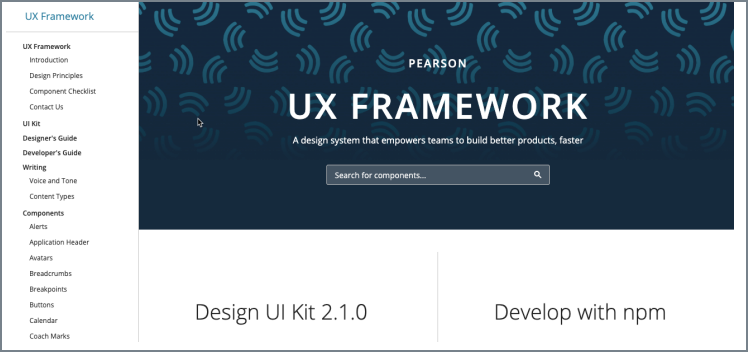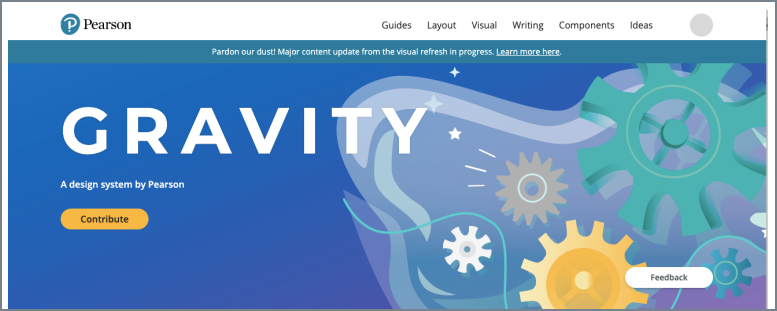New design system
Pearson, 2019
Before
After
Case study summary
Challenge
During Pearson’s 2019 digital transformation from book publishing to digital education software, I co-launched a new design system site to help the UX team create consistent designs.
A newly formed UX design team had been building products at such a rapid pace that inconsistencies were showing up across products. I noticed that these inconsistencies were not just in the UI patterns but also in the language choices across screens. The whole UX team knew that we needed a set of standards, but the only thing the team had found time to build was a site with UI components and specs. If we didn’t find some way to expand the UI component site into a clear set of UX guidelines, the UX team risked delivering a continuous series of inconsistent products, which could break the trust we were trying to build with customers as they moved from books to digital.
Approach
To address this problem, I met with 2 design system leads to explore expanding the existing UI component site into a more robust site that included guidelines.
We knew it would be a big effort to create a new design system site, so we needed to convince the UX leadership to devote resources to it. To do this, we created a survey for the UX team to get a better understanding of their needs. I then conducted a content quality audit of the existing UI components site, and we co-created a sitemap. We presented all these findings to the UX leadership team, and anticipating a positive response, I came to the meeting prepared to lead the small group through a Mad Libs writing exercise where each participant wrote a core strategy statement that eventually defined the mission for a new design system team:
“Provide guidelines that inspire designers to make consistent design decisions so users have a unified product experience.”
Outcome
A design system team was formed, and within 6 months, we created a new design system site with guidelines for content.
This site made it easier for UX designers and UX writers to create consistent designs, while also fostering a budding partnership between the 2 groups.
Impact
Customers began seeing more consistent products, making it easier for them to trust Pearson as they made the transition from books to digital.
Role
Lead UX Writer
Impact
Customers experienced consistent and easy-to-trust products.
Outcomes
Designers could easily create designs that would be consistent across products.
Workshop
Mad Libs exercise to create a core strategy statement
Focus areas
Information architecture for a new site
Page layout design
Content guidelines
Guidelines for components, layout, content, and accessibility
Result
A new design system site was created and published in 6 months.

